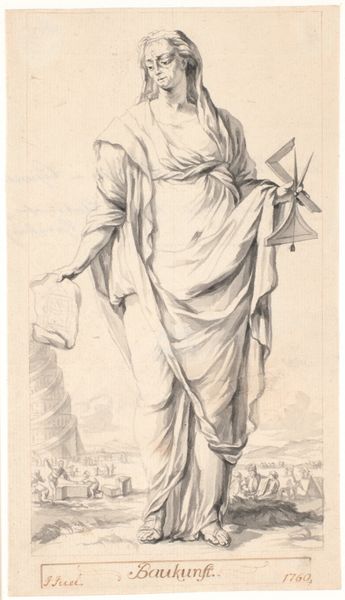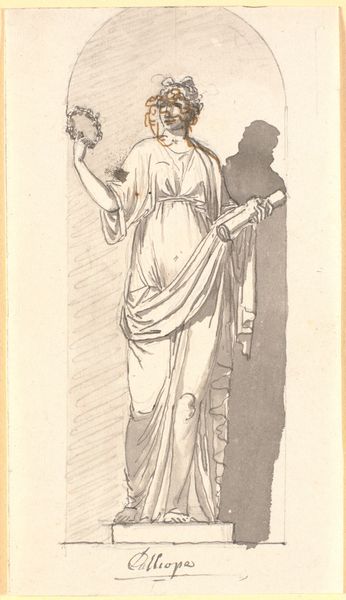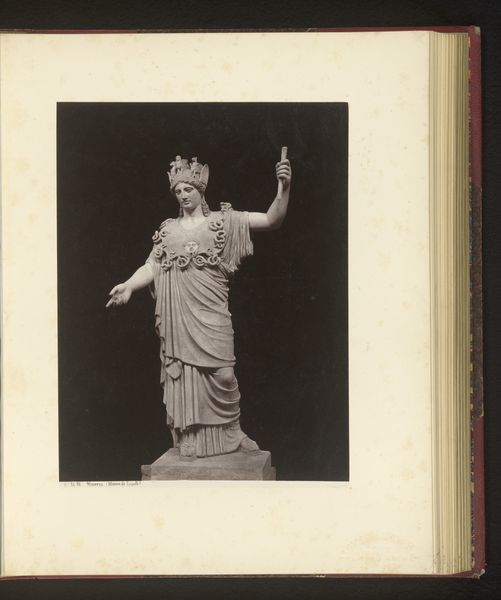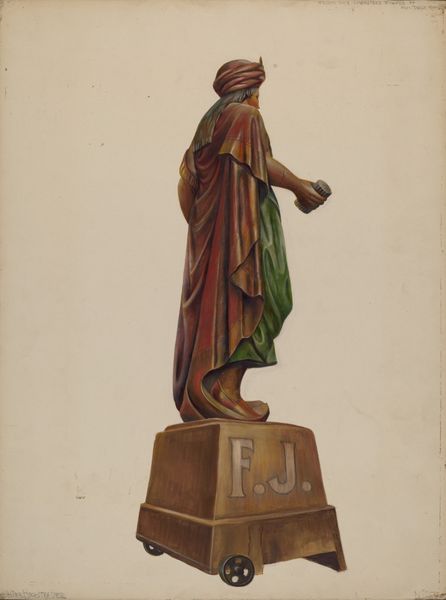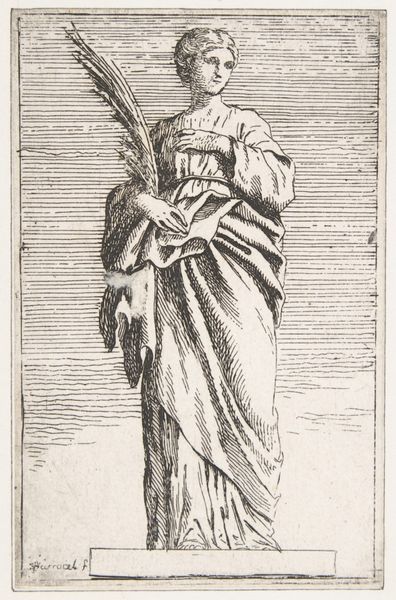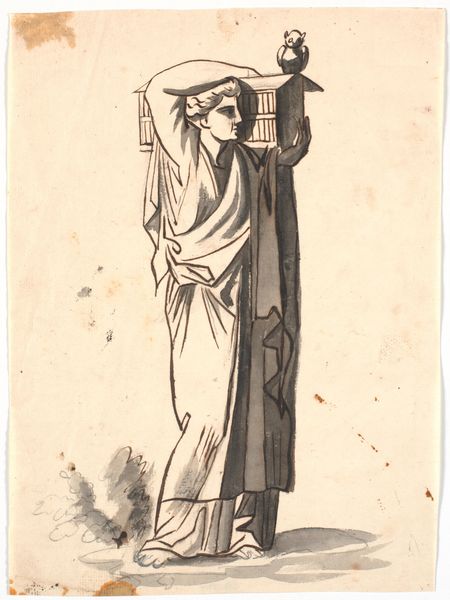
drawing, paper, pencil
#
portrait
#
drawing
#
figuration
#
paper
#
pencil drawing
#
pencil
Dimensions: overall: 28.5 x 22.5 cm (11 1/4 x 8 7/8 in.) Original IAD Object: 37 1/2" high
Copyright: National Gallery of Art: CC0 1.0
Editor: Here we have Salvatore Borrazzo’s pencil drawing, "Weather Vane," from around 1937. I’m struck by the depiction of the Statue of Liberty as both a symbol and a functional object. What does this pairing suggest to you? Curator: The means of production are crucial here. The Statue of Liberty, a mass-produced symbol of freedom, is rendered here as a potential commodity – a weathervane. It's less about artistry and more about understanding the cultural commodification and reproduction of iconic images. Editor: Interesting. So you're saying the value shifts from artistic expression to... the market? Curator: Precisely! The labor involved in crafting such an object and the consumption it implies are front and center. This challenges the boundaries between art and craft by exposing the Statue of Liberty, which often represents liberty, being reproduced into various everyday use objects in the market as decorative element, just like any other craft. It underscores the socio-economic aspects inherent in artmaking. Editor: I see your point. So, while it appears simple, the drawing actually highlights how national symbols are incorporated and commercialized within a material culture. Curator: Exactly. We’re seeing not just an image, but a process – the industrialization of an ideal. Editor: It makes you wonder about the intended audience and the societal implications of reducing Liberty to a mass-produced weather instrument. Curator: And whether the creation is high art or not; such hierarchies disappear as we view artwork more democratically, based on social significance. Editor: Thank you, that’s given me a lot to think about, moving past symbolism to focus on production. Curator: Yes, a perspective of this type can change our very definition of what can be defined as 'art', and in what settings.
Comments
No comments
Be the first to comment and join the conversation on the ultimate creative platform.


